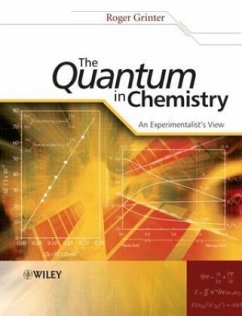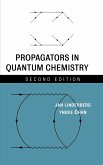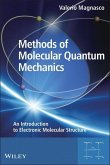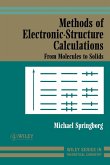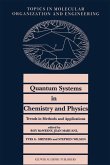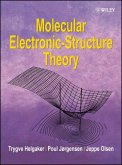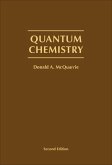This book explores the way in which quantum theory has become central to our understanding of the behaviour of atoms and molecules and the way in which this underlies so many of the experimental measurements we make, how we interpret those experiments and the language which we use to describe our results. It attempts to provide an account of the quantum theory and some of its applications to chemistry. The subject matter develops as follows:
_ Chapter 1 considers the place of theory in science, emphasising in particular the significance of hypotheses, postulates and laws;
_ Chapter 2 gives an account, in approximately historical sequence, of the development of the quantum theory paying particular attention to the emerging experimental data and the new theoretical concepts developed for their interpretation;
_ Chapters 3 and 4 describe some fundamental details of the theory with explanations and simple, chemically-relevant examples. Emphasis is laid on what we can and cannot know and comparisons with classical, macroscopic mechanics are made wherever possible;
_ The remaining chapters (5-12) describe the quantum mechanics involved in the important techniques (especially IR, NMR and electronic spectroscopy) and theoretical concepts (the chemical bond, molecular magnetism) that underlie our modern views of molecular structure and function. Here also calculations relevant to chemical problems are described in detail;
_ Many aspects of the mathematics of quantum theory are placed in the 10 appendices which also provide a valuable source of reference material on units, conversion factors and mathematical functions useful in quantum-mechanical calculations;
_ Most chapters include boxed text that expands on and explains the material in the main text and problems are presented at the end of each chapter.
This book is for researchers working on experimental aspects of chemistry and the allied sciences at all levels, from advanced undergraduates to experienced research project leaders, wishing to improve, by self-study or in small research-orientated groups, their understanding of the ways in which quantum mechanics can be applied to their problems. The book also aims to provide useful background material for teachers of quantum mechanics courses and their students.
Hinweis: Dieser Artikel kann nur an eine deutsche Lieferadresse ausgeliefert werden.
_ Chapter 1 considers the place of theory in science, emphasising in particular the significance of hypotheses, postulates and laws;
_ Chapter 2 gives an account, in approximately historical sequence, of the development of the quantum theory paying particular attention to the emerging experimental data and the new theoretical concepts developed for their interpretation;
_ Chapters 3 and 4 describe some fundamental details of the theory with explanations and simple, chemically-relevant examples. Emphasis is laid on what we can and cannot know and comparisons with classical, macroscopic mechanics are made wherever possible;
_ The remaining chapters (5-12) describe the quantum mechanics involved in the important techniques (especially IR, NMR and electronic spectroscopy) and theoretical concepts (the chemical bond, molecular magnetism) that underlie our modern views of molecular structure and function. Here also calculations relevant to chemical problems are described in detail;
_ Many aspects of the mathematics of quantum theory are placed in the 10 appendices which also provide a valuable source of reference material on units, conversion factors and mathematical functions useful in quantum-mechanical calculations;
_ Most chapters include boxed text that expands on and explains the material in the main text and problems are presented at the end of each chapter.
This book is for researchers working on experimental aspects of chemistry and the allied sciences at all levels, from advanced undergraduates to experienced research project leaders, wishing to improve, by self-study or in small research-orientated groups, their understanding of the ways in which quantum mechanics can be applied to their problems. The book also aims to provide useful background material for teachers of quantum mechanics courses and their students.
Hinweis: Dieser Artikel kann nur an eine deutsche Lieferadresse ausgeliefert werden.

